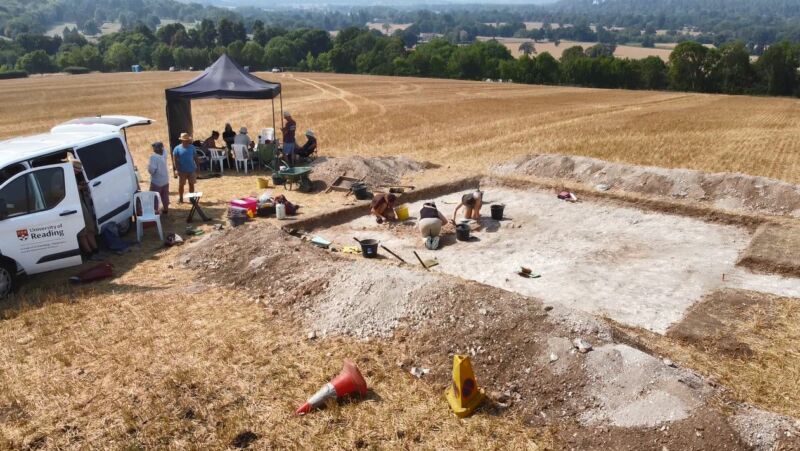Metal detector enthusiasts find 6th-century Anglo-Saxon warrior’s grave

Enlarge (credit: University of Reading)
The Berkshire hilltop where metal detector hobbyists found a warrior's grave was supposed to have been an unimportant patch of borderland between neighboring tribes 1,400 years ago. But the warrior, buried with a view of the Thames River valley and all the trappings of power and status, tells a different story. His presence suggests that this quiet bit of English countryside may have been in the thick of the power struggles that rippled across Britain in the decades after the Roman Empire receded.
Around 400 CE, Rome abandoned its far-flung colony in Britain and withdrew its troops back to the mainland of Europe. Not long after that, Germanic warriors from the continent swept onto the island: the forerunners of the Anglo-Saxons. Archaeologists don't entirely agree on whether the Anglo-Saxons arrived as a huge wave of settlers who overwhelmed and replaced the native Britons, or whether only a smaller number of warriors came to Britain to seize power in the wake of Rome's departure. Either way, they reshaped British culture and society over the next several centuries.
The Anglo-Saxon tribes banded together under strong military leaders. Over time, some of those groups would coalesce into the medieval Anglo-Saxon kingdoms of Wessex, Mercia, and Kent. Others faded from power, wiped out or absorbed by their rivals. And that brings us to the stretch of the Thames River between Oxford and London and the man archaeologists have nicknamed the Marlow Warlord.
Read 10 remaining paragraphs | Comments